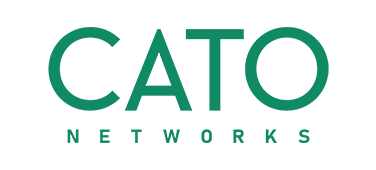product
- About Cato Networks
- About Cato Cloud
- Unification of shadow IT countermeasures by Cato CASB,
- Information leakage countermeasures with Cato Smart DLP
- Safe website browsing with Cato RBI
- CATO socket Easily connect existing LAN environment to SASE. Migration to SASE made easy
- Cato SASE XDR
- Cato DEM(Digital Experience Monitoring)
service
Application for evaluation machine
- FAQ

Cato Networks
Cato Networks
JFE Engineering Corporation

Bandwidth congestion is resolved and zero trust is supported
Issues before implementation
- Traffic surges as business systems shift to the cloud, straining network bandwidth
- The existing network environment is aging and complex, and malfunctions often occur.
- Traditional perimeter-based security measures have difficulty responding to the increasing use of SaaS and remote work

Cato SASE Cloud Solution
- All-in-one network update and Zero Trust support
- Improved issues such as slow network connection
- Visualizing the network makes it easier to respond to failures and reduces operational burden

JFE Engineering Corporation
DX Headquarters ICT Center
Digital Infrastructure Department
Masaya Sato

JFE Engineering Corporation
DX Headquarters, ICT Center, Digital Infrastructure Department
First Technology Office
Mr. Naoki Karasawa

JFE Engineering Corporation
DX Headquarters, ICT Center, Digital Infrastructure Department
Security Management Office
Mr. Yuki Saito
<<Challenge>> Network bandwidth is becoming tight due to the shift of business systems to the cloud. Complete renewal of network environment and security measures.
With its roots in the steel and shipbuilding industries, JFE Engineering is integrating and evolving these technologies to develop a comprehensive engineering business that supports people's lives and industry through the construction of social infrastructure such as environmental and energy plants, bridges, and steel structures.In particular, the company has advanced technology and a wealth of experience in the use of a wide variety of energy sources, including waste-to-energy plants, natural gas-related energy plants, and pipelines, and in recent years has also been involved in a number of renewable energy power plants, including biomass, geothermal, solar, wind, and hydroelectric power plants.
In recent years, the company has been shifting its business systems to the cloud, which has resulted in problems with network bandwidth congestion. Masaya Sato, Director of the Digital Infrastructure Department at the ICT Center of the DX Headquarters, recalls, "The introduction of Microsoft 365 had a particularly large impact. After that, the increase in online meetings and remote work due to the COVID-19 pandemic compounded the network congestion. Connections became particularly difficult on Monday mornings when everyone starts work at the same time, and many users called for improvements."
Previously, the company consolidated all of its network locations into a data center (DC) for Internet access. However, the surge in traffic resulting from increased SaaS usage placed a heavy load on the lines connecting the DC to the Internet. To disperse traffic, the company had exceptionally allowed some locations to use a method called "Internet breakout," which allows users to access services directly without going through the DC. However, if this practice became the norm, new operational challenges arose. Naoki Karasawa of the First Technology Office, Digital Infrastructure Department, ICT Center, explained, "Building a bypass within the DC would complicate the design and require significant time and effort to troubleshoot. Furthermore, extracting and analyzing logs required for investigations was extremely cumbersome, forcing experts to rely on empirical analysis. This created stress for both users, whose work was being disrupted, and operators, who needed to resolve issues quickly."
To address these issues, the company considered increasing the number of lines and equipment, but given that the existing environment was aging and frequent malfunctions occurred, it decided that treating the symptoms would not be a fundamental solution.The company decided to review its network infrastructure itself, but during this review process, a new issue emerged: security measures.
Until now, the company had implemented and operated its network and security measures separately, but with the expansion of SaaS use and remote work, the locations of people and data, and communication methods have become more diverse, making it essential to have an integrated network and security concept in order to ensure security regardless of location.
"In terms of security measures, the JFE Group's CSIRT was considering adopting zero trust, and the Company was also interested in this approach. Conventional perimeter-based security measures had their limitations, so we felt that we needed to revamp our network environment and security measures as a whole," said Sato.
Product Selection: After verifying 200 items in the PoC, Cato SASE Cloud was selected based on its SASE functionality and ease of use.
In 2020, JFE Engineering began full-scale consideration of building a new network environment. First, they selected over 10 products, mainly SD-WAN, as candidates, and then narrowed it down to two products. They then conducted a PoC for these two products. After verifying 200 items, they ultimately decided to adopt Cato SASE Cloud. Saito Yuki of the Security Management Office, Digital Infrastructure Department, ICT Center, explains the selection process as follows:
"We first learned about Cato SASE Cloud when an overseas subsidiary requested its use. We contacted Macnica to confirm the detailed functions. The other product that was shortlisted had only just implemented SASE functions at the time and was still in an immature state. Cato SASE Cloud was particularly advantageous in terms of the ease of use of its log search function. For example, necessary information was not output sufficiently during incident investigations, and there were issues with log searchability. On the other hand, Cato SASE Cloud made it easy to grasp the situation because it allowed us to centrally search logs for security functions such as web filters, L3, L4, IPS, and anti-malware."
The company launched the implementation project in April 2022 and began work. As the first step, operations began at the data center in October. Since then, the system has been gradually expanded to the head office, factories, branches, etc., and is currently in operation at approximately 50 locations, including construction and operation sites.
"We did have some difficulties with compatibility between Japan's unique router equipment and Cato devices, but with the appropriate support from IIJ Global Solutions and Macnica, we were able to achieve a smooth deployment overall," says Karasawa.

Effect: Network bandwidth congestion is alleviated, visualization is achieved, and rapid deployment to sites with underdeveloped communication infrastructure is possible.
Currently, approximately 10,000 users, including mobile users, are using the Cato SASE cloud at JFE Engineering. The benefits of the implementation include not only eliminating network delays and connection failures, but also visualizing network status, which has been a major success.
"It's become easier to identify bottlenecks, and we've been able to respond more quickly. Response time when a problem occurs has also been reduced from half a day to a day to about one or two hours. Furthermore, the number of problems has decreased significantly, and complaints from users have almost completely disappeared," says Sato.
In terms of security, significant benefits have been achieved, such as making it easier and more reliable to track logs.
"User-based identification is now possible, allowing access control to be set in detail on an individual or group basis," says Saito.
Additionally, while this is a benefit unique to the company's industry, the fact that SD-WAN allows them to quickly set up a network environment on-site is a major advantage.
"Many construction sites, such as plants, lack infrastructure. Previously, physically laying a WAN line from a telecommunications carrier at such a site would have been extremely costly and taken several months. With this implementation, we can now select and use the appropriate mobile or satellite line from the appropriate carrier depending on the local communication conditions. As a result, we can set up a network environment equivalent to that in-house in as little as one week, and begin work. The benefits of this are immeasurable."
Furthermore, the Digital Infrastructure Department was able to redirect the resources saved by reducing operational burdens to proactively invest in DX initiatives.
"the Company is also making progress with its digital transformation efforts, and various services have already been launched internally. The use of SaaS is also increasing, but we only had limited visibility into the actual communications situation in each department and on-site. By introducing Cato SASE Cloud, we were able to visualize this, which allowed us to understand the problems the field was facing and how they wanted to improve things, and we are now able to support digital transformation from behind the scenes," says Karasawa.
Future Outlook: Proceed with expansion to remaining bases and group companies, and consider integrating security measures
JFE Engineering plans to further expand the deployment of Cato SASE Cloud, introducing it to approximately 100 locations and approximately 25 group companies both in Japan and overseas. At the same time, the company plans to strengthen security measures and promote the adoption of zero trust.
"We plan to promote the automation of security and network operations, such as applying security policies and setting up new locations. Currently, we use multiple security products at the same time, but in the future we would like to consider integrating our security measures," says Sato.
User Profile
| JFE Engineering Corporation | |
| location | Hibiya International Building 22F, 2-2-3 Uchisaiwaicho, Chiyoda-ku, Tokyo |
| Introduction time | October 2022 |
| URLs | https://www.jfe-eng.co.jp/ |
| Established in 2003 as an engineering company of the JFE Group under JFE Holdings, which was established through the business integration of Nippon Kokan (NKK) and Kawasaki Steel. The company develops and operates a wide range of social infrastructure, including environmental and energy plants, bridges, and steel structures. By providing products and services based on the group's comprehensive strength and advanced technological capabilities, the company aims to adapt to the changing times and always be a world-leading engineering company. | |
Inquiry/Document request
Macnica Cato Networks
- TEL:045-476-2010
- E-mail:cato-sales@macnica.co.jp
Weekdays: 9:00-17:00


